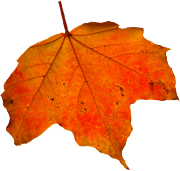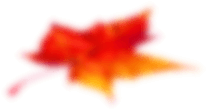Essential Medical Spa Tips For Healthy Skin
Medical spas, also known as med spas or medi-spas, have become increasingly popular in recent years as individuals seek effective and innovative treatments for their skin and overall well-being. These establishments provide a unique blend of traditional spa services, such as massages and facials, with medical-grade treatments like Botox injections and laser hair removal.
With a focus on offering non-invasive procedures that produce visible results, medical spas are ideal for individuals looking to address specific skin concerns or simply pamper themselves in a more clinical setting. Whether you’re interested in age-defying treatments or just want to relax and rejuvenate your skin, a visit to a medical spa can offer a comprehensive approach to wellness that combines relaxation and results.
Why Choose a Medical Spa?
Medical spas offer a range of treatments that go beyond what traditional spas can provide. Whether you’re looking to address acne, fine lines, or uneven skin tone, a medical spa can tailor treatments to your specific needs. These facilities are staffed with trained professionals who can recommend the best procedures for your skin concerns, ensuring that you get safe and effective results. If you’re in the Austin area and searching for a reputable medical spa, consider visiting medical spa in Austin TX for a personalized experience.
360 Plastic Surgery
4004 Marathon Blvd
Austin, TX 78756
(737) 304-6638
In addition to the advanced treatments offered, medical spas also provide a sense of luxury and relaxation that traditional spas are known for. The combination of cutting-edge technology and soothing spa services creates a unique environment that promotes both physical and mental well-being. So whether you’re seeking a solution to a specific skin concern or simply want to treat yourself to an indulgent experience, a visit to a medical spa can offer the best of both worlds. With expert professionals guiding you through personalized treatments, you can feel confident that you’re in good hands on your journey to healthier, more radiant skin.
Discover The Best Dental Care Tips For Healthy Teeth
Dentists play a crucial role in ensuring the oral health and well-being of individuals. They are trained professionals who specialize in diagnosing and treating various dental issues, such as cavities, gum disease, and tooth decay. Dentists also provide preventive care, including regular cleanings, exams, and X-rays to help maintain healthy teeth and gums.
With their expertise and knowledge, dentists are able to provide personalized treatment plans to address each patient’s unique needs. Whether it’s fixing a broken tooth or improving the appearance of a smile through cosmetic procedures, dentists play a vital role in helping patients achieve optimal oral health.
The Importance of Regular Dental Check-ups
Regular dental check-ups are crucial in maintaining good oral health. Dentists recommend that individuals schedule routine visits every six months to prevent dental issues from escalating. During these check-ups, dentists perform thorough examinations to detect any signs of tooth decay, gum disease, or other oral health problems. By addressing these issues early on, Rockville teeth replacement solutions can be avoided. Additionally, regular cleanings help remove plaque and tartar buildup, which cannot be effectively eliminated through daily brushing and flossing.
Rockville Dental Arts
1403 Research Blvd Suite A-5, Rockville, MD 20850
301-424-2030
Through regular dental check-ups, dentists can also provide valuable advice on proper oral hygiene practices and offer treatments to maintain healthy teeth and gums. By prioritizing preventive care and seeking regular dental check-ups, individuals can reduce their risk of developing serious dental issues and maintain a healthy, beautiful smile for years to come. Dentists play a crucial role in promoting overall health and well-being by emphasizing the importance of oral health and providing personalized care to ensure their patients’ long-term dental success.
Essential Tips For Exploring The Bars In Catskill
Looking for the perfect spot to unwind and enjoy a drink in the scenic Catskill Mountains? Look no further than the vibrant and eclectic bars that can be found throughout this charming region. Whether you’re a local looking for a new favorite hangout or a visitor wanting to experience the unique culture of the Catskills, you’re sure to find a bar that suits your style.
From cozy pubs with a rustic atmosphere to trendy cocktail lounges with craft cocktails, the bars in Catskill offer something for everyone. You can enjoy live music, local beers, and delicious food while taking in the stunning views of the mountains. So grab your friends and head out to explore the thriving nightlife scene in Catskill – you never know what hidden gem you might discover!
Experience the Local Flavor
When it comes to finding hidden gems in the Catskills, look no further than the bustling nightlife scene. Enjoy a cold beer or expertly crafted cocktail at one of the many bars that line the streets. From lively sports bars where you can catch the game with friends to intimate wine bars perfect for a romantic evening, there is something for everyone here. And for those looking to add some friendly competition to their night out, why not head over to the bowling alley Catskills NY for a fun-filled evening of strikes and spares?
Ralph’s Bar & Bowling
822 Oliverea Rd
Big Indian, NY 12410
(845) 254-5365
Soak in the local culture and make lasting memories as you experience the eclectic bars that make up the nightlife in Catskill. Whether you’re sipping on a locally brewed beer, sampling handcrafted cocktails, or enjoying some live music, you’re sure to find a bar that captures the spirit of the Catskills. So embrace the vibrant energy of this charming region and let the bars in Catskill be your go-to spot for unwinding and creating unforgettable moments with friends and loved ones. Come discover all that the Catskills have to offer and make your nights out truly special.
House Cleaning Experts Guide
Keeping a clean and organized home is essential for maintaining a healthy and stress-free living environment. However, for many people, juggling work, family, and social commitments can make it difficult to find the time and energy needed to thoroughly clean their homes. This is where house cleaning experts come in handy, providing professional cleaning services to help homeowners maintain a pristine living space.
House cleaning experts are trained professionals who have the skills and knowledge to tackle even the toughest cleaning jobs. Whether you need a one-time deep clean or regular maintenance cleaning, these experts can customize their services to meet your specific needs and preferences. With their attention to detail and expertise in using the right cleaning products and techniques, house cleaning experts can help you achieve a spotless and organized home that you can be proud of.
Expertise in Cleaning Services
House cleaning experts are equipped with the knowledge and skills to handle various cleaning tasks effectively. From deep cleaning bathrooms and kitchens to dusting, vacuuming, and mopping floors, these professionals can tackle any cleaning challenge with ease. By entrusting your home to Western Australia top house cleaning experts, you can rest assured that your living space will be thoroughly cleaned and sanitized, creating a healthy environment for you and your family.
Customized Cleaning Solutions
When you hire house cleaning experts, they will work with you to develop a customized cleaning plan that meets your unique needs and preferences. Whether you require weekly, bi-weekly, or monthly cleaning services, these professionals can tailor their cleaning schedule to fit your busy lifestyle. By relying on Western Australia top house cleaning experts, you can enjoy a clean, organized home without the stress and hassle of having to do it all yourself.
House cleaning experts take the burden off homeowners by providing thorough and efficient cleaning services that leave your home looking immaculate. Their expertise in using the right tools and techniques ensures that every nook and cranny is cleaned to perfection, creating a healthy and inviting space for you and your family. By opting for customized cleaning solutions, you can enjoy a pristine home without sacrificing precious time and energy. So why stress over cleaning when you can leave it to the professionals? Trust in house cleaning experts to keep your home sparkling clean and well-maintained, allowing you to focus on what truly matters in your life.
Mp3Juice Review: A Simple And Easy Way To Download Music
Are you looking for a convenient and reliable platform to download your favorite music for free? Look no further than Mp3Juice! This popular website offers a wide range of songs across various genres that can be easily downloaded to your device.
With Mp3Juice, you can quickly search for and download your favorite songs with just a few clicks. Whether you’re looking for the latest hits or classic tracks, Mp3Juice has got you covered. Stay tuned as we delve into a comprehensive review of Mp3Juice and explore all the features that make it a go-to destination for music lovers!
Why Choose Mp3Juice for Your Music Needs
One of the key reasons why Mp3Juice stands out as a top choice for music enthusiasts is its user-friendly interface. The website is easy to navigate, allowing users to quickly find and download their favorite tracks without any hassle. Additionally, Mp3Juice offers a vast library of songs spanning different genres, ensuring that there is something for everyone. Whether you’re into pop, rock, hip-hop, or EDM, Mp3Juice has it all. And with the ability to download music for free, it’s no wonder why so many people flock to Tubidy for all their music needs.
In conclusion, Mp3Juice is a reliable and convenient platform for music lovers to download their favorite songs for free. With its user-friendly interface and vast library of songs across various genres, Mp3Juice caters to a wide range of musical preferences. Whether you’re looking for the latest hits or timeless classics, Mp3Juice has something for everyone. So why wait? Head over to Mp3Juice and start downloading your favorite tunes today!
Nutritional Table Guide: Tips For Healthy Eating
When it comes to making informed decisions about our diet and overall health, having access to accurate and comprehensive nutritional information is crucial. This is where a nutritional table comes in handy, providing a detailed breakdown of the macronutrients, vitamins, minerals, and calories present in a particular food item.
With the help of a nutritional table, individuals can easily track their daily intake of essential nutrients, identify any deficiencies, or make adjustments to meet their specific dietary needs. Whether you’re looking to lose weight, manage a health condition, or simply make healthier food choices, understanding the nutritional content of what you’re eating is key to achieving your wellness goals.
The Importance of Nutritional Tables
Nutritional tables play a crucial role in helping individuals make informed decisions about their diet and overall health. By providing detailed information about the macronutrients, vitamins, minerals, and calories present in various food items, these tables empower people to take control of their nutrition. Whether you’re trying to lose weight, manage a health condition, or simply improve your eating habits, having access to a tabla nutricional can help you track your nutrient intake and make necessary adjustments to meet your dietary goals.
Meeting Your Wellness Goals
Understanding the nutritional content of the foods you consume is essential for achieving your wellness objectives. A tabla nutricional can serve as a valuable tool in monitoring your daily nutrient consumption, identifying any deficiencies, and making informed choices about what you eat. Whether you’re following a specific diet plan, aiming to boost your energy levels, or simply striving for better health, utilizing a nutritional table can provide the knowledge and insight needed to support your overall well-being.
By utilizing a nutritional table, individuals can take proactive steps towards improving their health and achieving their wellness goals. Whether it’s through managing caloric intake, ensuring adequate nutrient consumption, or making informed food choices, the information provided in a nutritional table can be invaluable. By understanding the importance of nutritional tables and using them as a tool for monitoring and optimizing your diet, you can take control of your health and well-being in a meaningful way. Ultimately, having access to accurate and detailed nutritional information empowers individuals to make positive changes that can have a significant impact on their overall health and quality of life.
Top Tips For Improving Golf Swing Speed With Trainer
Are you looking to improve your golf game and increase your swing speed? A golf swing speed trainer may be just what you need. These innovative training devices are designed to help golfers of all skill levels improve their swing mechanics, generate more power, and ultimately hit the ball farther down the fairway.
Whether you are a beginner looking to develop a consistent swing or a seasoned pro looking to add some extra distance to your shots, a golf swing speed trainer can be a valuable tool in your arsenal. By incorporating one of these trainers into your practice routine, you can focus on building muscle memory, improving swing tempo, and developing more efficient mechanics to help you achieve greater clubhead speed and distance on the course.
How Does a Golf Swing Speed Trainer Work?
When using a golf swing speed trainer, golfers can practice their swing mechanics in a controlled environment. These trainers typically consist of a weighted club or a specially designed device that helps golfers feel the correct positions and movements throughout the swing. By repetitively practicing with the trainer, golfers can develop muscle memory and improve their technique over time, resulting in increased swing speed and more consistent shots on the course.
Benefits of Using a Golf Swing Speed Trainer
One of the key advantages of incorporating a golf swing speed trainer into your practice routine is the ability to work on specific aspects of your swing that may be holding you back. Whether it’s improving your tempo, increasing your clubhead speed, or refining your release, these trainers allow you to target areas for improvement and make adjustments as needed. With consistent practice and feedback from the trainer, golfers can make significant strides in their game and see measurable improvements in their performance on the course.
Overall, a golf swing speed trainer can be a game-changing tool for golfers looking to enhance their skills and performance on the course. By utilizing this innovative training device, golfers can fine-tune their swing mechanics, increase their clubhead speed, and ultimately hit the ball farther with more consistency. The ability to focus on specific areas of improvement and receive feedback through repetitive practice sets golfers up for success in achieving their desired results. With dedication and commitment to using a golf swing speed trainer, golfers of all levels can take their game to new heights and experience greater success on the course.
Easy Furniture Moving Services: Stress-Free Solutions
When it comes to moving furniture, the task can often be daunting and overwhelming. Whether you are relocating to a new home or simply rearranging your space, the thought of lugging heavy items around can be enough to deter many individuals from getting the job done. This is where furniture moving services come in handy, offering a convenient and efficient solution to help you with all your furniture moving needs.
From couches and beds to dining tables and dressers, furniture moving services specialize in safely transporting all types of furniture items from one location to another. With professional movers who are skilled in handling bulky and fragile pieces, you can have peace of mind knowing that your furniture will be relocated without any damage. So, whether you are looking to move a single item or an entire household’s worth of furniture, hiring a furniture moving service can make the process smooth and stress-free.
The Benefits of Furniture Moving Services
When it comes to relocating your furniture, hiring furniture moving services offers numerous benefits. These professional movers have the experience and expertise to handle all types of furniture items, ensuring that they are safely transported without any damage. Furthermore, by outsourcing the task to a moving service, you can save yourself time and effort, allowing you to focus on other aspects of your move. Whether you need to move heavy items like couches or delicate pieces like antiques, a furniture moving service can provide the necessary equipment and manpower to get the job done efficiently.
Peace of Mind with Professional Handling
One of the main advantages of using a furniture moving service is the peace of mind that comes with knowing your belongings are in good hands. Professional movers are trained to handle furniture items with care, using proper techniques and equipment to ensure safe transportation. Whether you are moving across town or across the country, furniture moving services can make the process seamless and stress-free. So, instead of struggling to move heavy items on your own, consider hiring a professional moving service to take care of all your furniture relocation needs.
In conclusion, furniture moving services provide a convenient and efficient solution for relocating all types of furniture items. With professional movers who are skilled in handling bulky and fragile pieces, you can rest assured that your belongings will be transported safely without any damage. By outsourcing the task to a moving service, you can save time and effort, allowing you to focus on other aspects of your move. So, whether you are moving a single item or an entire household’s worth of furniture, hiring a furniture moving service can make the process smooth and stress-free, providing you with peace of mind and professional handling throughout the relocation process.
Dentist Guide: Tips For A Healthy Smile
When it comes to maintaining good oral health, regular visits to the dentist are crucial. Dentists are trained professionals who specialize in diagnosing and treating issues related to the teeth, gums, and mouth. They play a vital role in helping patients prevent dental problems and maintain a healthy smile.
From routine cleanings and fillings to more complex procedures like root canals and dental implants, dentists provide a wide range of services to ensure their patients’ oral health is in top condition. By addressing issues early on and providing personalized treatment plans, dentists help their patients achieve and maintain a beautiful, healthy smile for years to come.
The Importance of Regular Dental Visits
Regular dental visits are essential for maintaining good oral health. Dentists not only clean and examine your teeth but also check for any signs of potential issues that could arise. By visiting your dentist regularly, you can catch problems early on before they become more serious and costly to treat. Additionally, dentists can provide valuable advice on how to properly care for your teeth and gums at home to prevent future issues. If you’re looking to enhance the appearance of your smile, ask about teeth whitening specials garden grove for a brighter, more confident smile.
Westgrove Dental Care
5247 Lampson Ave
Garden Grove, CA 92845
(714) 893-2453
In conclusion, dentists play a vital role in helping individuals maintain good oral health and achieve a beautiful smile. By offering a range of services from routine cleanings to more complex procedures, dentists help patients prevent dental problems and address issues early on. Regular dental visits are essential for catching any potential issues before they become more serious, as well as for receiving valuable advice on at-home oral care. With the help of a dentist, you can enjoy a healthy smile for years to come.
Criminal Defense Attorney Tips: How To Fight Your Case
When facing criminal charges, it is crucial to have a skilled and experienced defense attorney by your side to protect your rights and provide you with the possible outcome in court. A criminal defense attorney defending individuals or organizations charged with criminal offenses, ranging from misdemeanors to felonies.
These legal professionals will work tirelessly to investigate your case, gather evidence, negotiate with prosecutors, and represent you in court to ensure that you receive a fair trial and favorable resolution. By retaining the services of a competent criminal defense attorney, you can increase your chances of obtaining a successful defense and minimizing the consequences of a criminal conviction.
Why You Need a Criminal Defense Attorney
A criminal defense attorney plays a crucial role in safeguarding your rights and interests when you are facing criminal charges. These legal professionals have the knowledge to navigate the complexities of the legal system, ensuring that you receive a fair trial and proper representation in court. By working with a skilled dui attorney Manassas VA, you can rest assured that your case will be thoroughly examined, evidence will be collected, and negotiations with prosecutors will be conducted effectively to achieve the possible outcome.
The Irving Law Firm
9253 Mosby St., 2nd Floor
Manassas, VA 20110
(703) 844-4118
In addition, a criminal defense attorney will work diligently to protect your rights and advocate on your behalf throughout the entire legal process. They will be there to provide you with guidance, support, advice to help you make informed decisions about your case. With their dedication , a criminal defense attorney can make a significant difference in the outcome of your case and can help you navigate through what can be a daunting and overwhelming experience. So, if you are facing criminal charges, it is imperative to hire a reputable criminal defense attorney who will fight for your rights and work tirelessly to secure the possible outcome for you.
- PAGE 2 OF 5 -


















